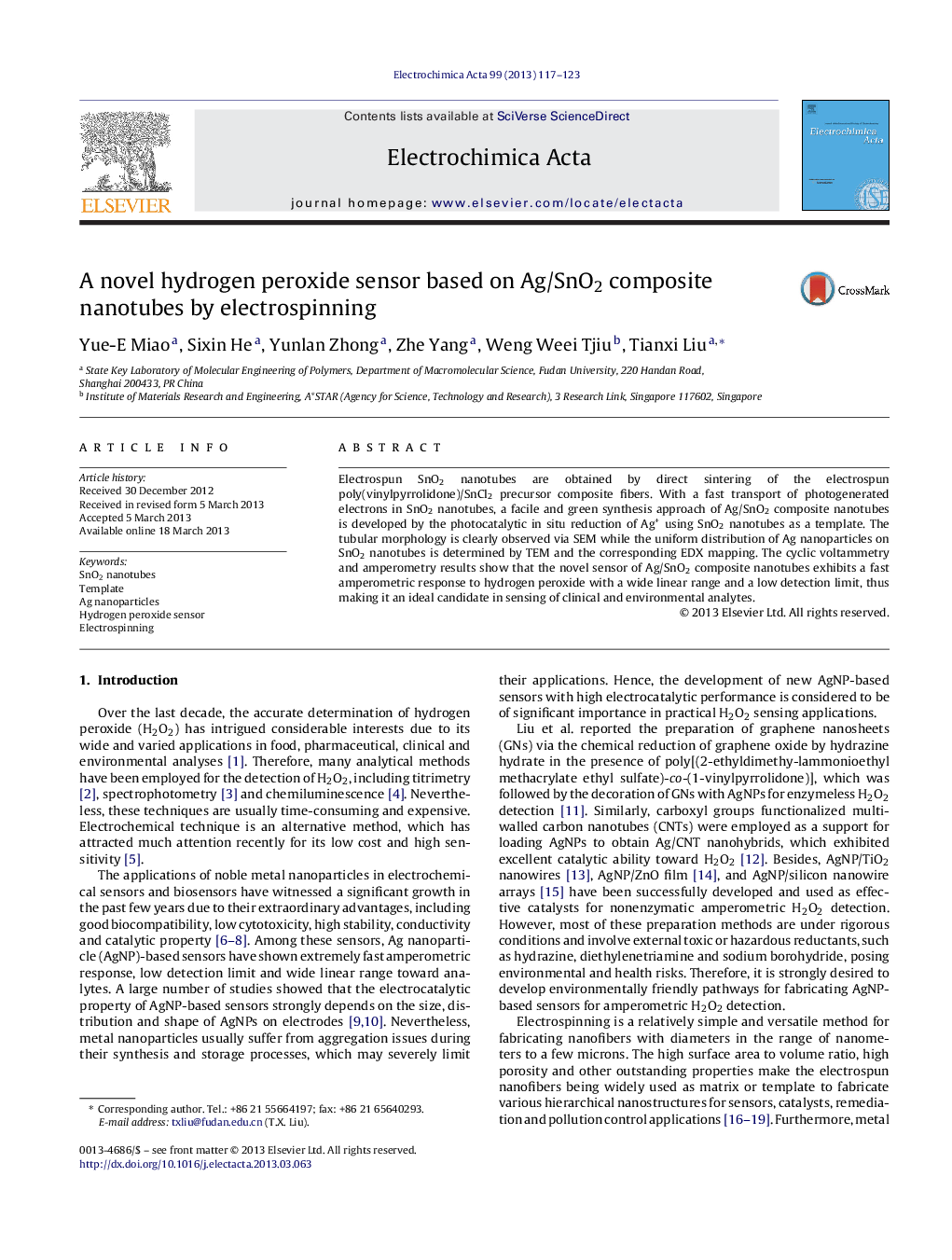| Article ID | Journal | Published Year | Pages | File Type |
|---|---|---|---|---|
| 187132 | Electrochimica Acta | 2013 | 7 Pages |
•A novel hydrogen peroxide sensor of Ag/SnO2 composite nanotubes is obtained.•The open tubular nanostructure with high contact area facilitates the diffusion of H2O2.•This enzymeless sensor exhibits wide linear range and low detection limit for H2O2.
Electrospun SnO2 nanotubes are obtained by direct sintering of the electrospun poly(vinylpyrrolidone)/SnCl2 precursor composite fibers. With a fast transport of photogenerated electrons in SnO2 nanotubes, a facile and green synthesis approach of Ag/SnO2 composite nanotubes is developed by the photocatalytic in situ reduction of Ag+ using SnO2 nanotubes as a template. The tubular morphology is clearly observed via SEM while the uniform distribution of Ag nanoparticles on SnO2 nanotubes is determined by TEM and the corresponding EDX mapping. The cyclic voltammetry and amperometry results show that the novel sensor of Ag/SnO2 composite nanotubes exhibits a fast amperometric response to hydrogen peroxide with a wide linear range and a low detection limit, thus making it an ideal candidate in sensing of clinical and environmental analytes.
Graphical abstractA novel hydrogen peroxide (H2O2) sensor of Ag/SnO2 composite nanotubes is fabricated by the photocatalytic in situ reduction of Ag+ using electrospun SnO2 nanotubes as a template. The open tubular structure offers a much higher contact area and facilitates the diffusion of H2O2. Therefore, the newly designed sensor exhibits excellent analytical response to H2O2 with fast response, wide linear range and low detection limit, which may find potential applications in pharmaceutical, clinical, environmental and other analytical fields.Figure optionsDownload full-size imageDownload as PowerPoint slide
